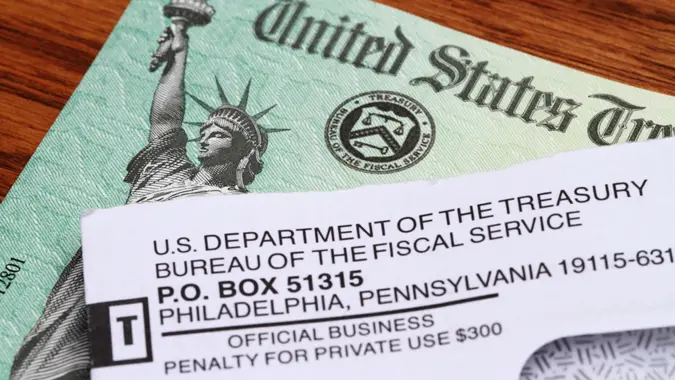5 Things Social Security Recipients Need To Do Now Before 2024 Ends

Commitment to Our Readers
GOBankingRates' editorial team is committed to bringing you unbiased reviews and information. We use data-driven methodologies to evaluate financial products and services - our reviews and ratings are not influenced by advertisers. You can read more about our editorial guidelines and our products and services review methodology.

20 Years
Helping You Live Richer

Reviewed
by Experts

Trusted by
Millions of Readers
The end of the year is a good time for Social Security beneficiaries to familiarize themselves with upcoming changes and updates that could impact their benefits. The last thing you want to do is get caught by surprise because of new rules or schedules.
If you’re a Social Security recipient, here are five things you should do now before 2024 ends.
Determine Your 2025 Check Based on New COLA
Social Security recipients will get a 2.5% cost-of-living adjustment (COLA) in 2025. The new COLA will boost average retirement payments by about $47 a month, based on October 2024 data from the Social Security Administration. The COLA is implemented nearly every year to help beneficiaries deal with inflation. Before the end of 2024, take time to figure out what your 2025 payment should be based on the new COLA.
Review Key Dates for 2025
Although the SSA follows the same basic payment format every year, payment dates usually change. As a Social Security recipient, you should take time now to familiarize yourself with the 2025 payment schedule. Here’s a look at some key dates to know:
- Dec. 31, 2024: This is when the 2025 COLA will be reflected in payments to Supplemental Security Income (SSI) beneficiaries. Some people receive both Social Security benefits and SSI.
- Jan. 8, 2025: This is when the first regular Social Security payments with the new COLA will be issued — the second Wednesday of the month. The first payments will be distributed to recipients whose birthdates fall on the 1st through the 10th. On the second Wednesday (Jan. 15), payments will be issued to recipients with birthdates that fall on the 11th through the 20th. On the third Wednesday (Jan. 22), payments will be issued to those with birthdates that fall on the 21st through the 31st.
For the full 2025 schedule, visit this SSA page.
Double-Check Your Full Retirement Age
If you have not yet reached Social Security’s full retirement age (FRA), take time now to see if you’ll hit it over the next year. This is the age at which you are entitled to your full monthly payment based on your career earnings record. The FRA for nearly all new applicants is either 66 or 67, depending on your birth year. Visit the SSA’s retirement age calculator to find if you’ll reach full retirement age in 2025.
Determine Your Income Tax Obligation
Another thing you should do before the end of 2024 is figure out what you might owe in taxes on Social Security income. About 40% of Social Security beneficiaries pay federal income taxes on their benefits, according to the SSA. This typically happens when you have outside “provisional” income such as wages, interest, investment returns and dividends.
For single filers who haven’t yet reached full retirement age, benefits aren’t taxed if your provisional income is less than $25,000. That rises to $32,000 if you’re married and filing a joint return.
Up to half of your Social Security benefits might be taxable if your provisional income is $25,000 to $34,000 for single filers, or $32,000 to $44,000 for joint filers. For anything above those income levels, up to 85% of your benefits could be taxable.
Review the ‘Earnings Test’
If you receive Social Security benefits but still work to earn additional income, the SSA has an earnings test that reduces your benefits before you reach full retirement age. Again, it’s a good idea to take time now to determine how much you might be impacted by the test. Even if you’re officially retired, the earnings test might apply if you have a side gig or some other income source.
If you are under full retirement age for the entire year, the SSA deducts $1 from your benefit payment for every $2 you earn above the annual limit. The SSA counts your earnings only up to the month before you reach your FRA — not your earnings for the entire year. For 2024, the limit for recipients not reaching FRA is $22,320, but that will rise to $23,400 in 2025.
More From GOBankingRates
- Nearly 1 in 3 Americans Hit by a Costly Holiday Scam, Norton Survey Shows -- How To Avoid This
- Here's What the Average Social Security Payment Will Be in Winter 2025
- How Middle-Class Earners Are Quietly Becoming Millionaires -- and How You Can, Too
- The Easiest Way to Score $250 for Things You Already Do
 Written by
Written by  Edited by
Edited by 

























